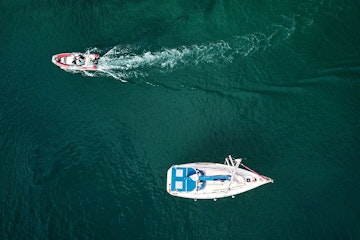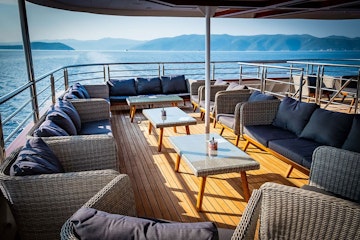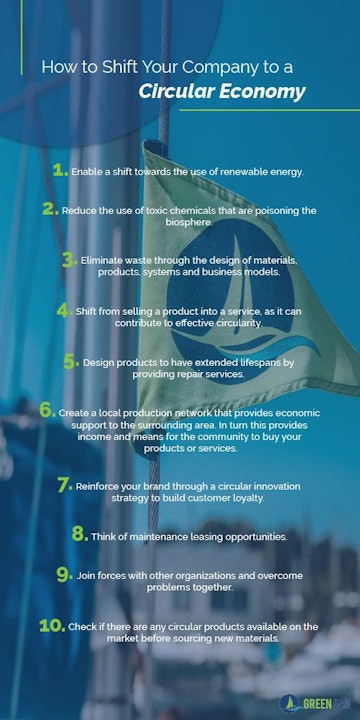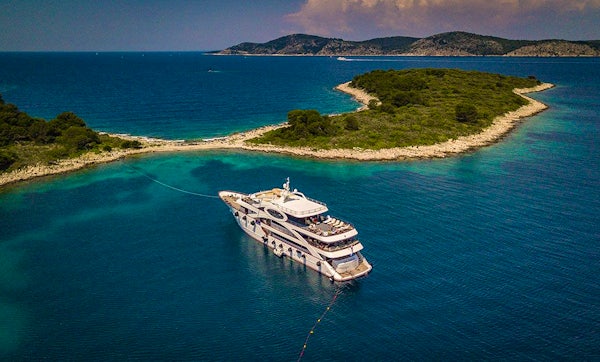The concept of a ‘Circular Economy’ is recently high on the political agenda. World business leaders, policy makers, academics and NGOs are leading the way towards a more circular economy which is necessary in order to help solve global, environmental and economic challenges.
Economic activities are today still based on a linear model of production and consumption; extract or produce and consume or throw. This depletes natural resources, generates waste and has also proven to be unsustainable. It’s shortcomings include a tendency for shorter product lifespans and a tendency towards disposal rather than repair, even when reuse is possible. This linear model of production and consumption assumes a take–make–waste pattern in which energy, labour and capital produce goods and services obtained from natural resources with a single life cycle. As a result, the model does not optimise materials, nor recommend their recycling, reuse or recovery.
Moreover, the linear model results in inefficient use of our scarce resources, increases detrimental emissions and generates growing amounts of waste from the whole value chain as well as resource extraction, manufacturing, transportation and consumption.
WHAT IS CIRCULAR ECONOMY?
Circular economy is commonly defined as an economic model that is interrelated with sustainability concepts. The aim is that the benefit of products, materials and resources, such as water and energy, stays in the economy as long as possible and consequently reduces waste generation. It serves as an alternative to the current model of production and consumption with the potential of solving current and future environmental challenges, focusing on reusing materials to reduce resource costs, which leads to a smaller risk in supply chains and reduced climate pollution.
Many studies show that the global economy could benefit tremendously from a more circular approach, expressed by material savings, emissions reductions and job opportunities.
At its core, a circular economy proves that products no longer have a life cycle with a beginning, middle, and end. What is more, this model contributes to less waste creation and can actually add value to the ecosystem. When materials stop being used, they go back into a useful cycle, consequently the circular economy. If a product or service is truly circular, it will never actually have an end to its life, but rather continuously take a new form.
Can you imagine what would happen if everything was made to be restorative and regenerative? The reused would go directly back to users, the refurbished would come back to service providers, remanufactured would go through the manufacturing process and recycled would go back to the materials processor.

CAN THIS MODEL BE APPLIED WITHIN THE NAUTICAL TOURISM INDUSTRY?
What about applying a circular economy model within the industry that generates revenues of about €28 billion a year only in Europe?
All segments of the nautical economy are facing pressure from both regulators and consumers to be more environmentally friendly.
This industry causes significant environmental impacts and, in certain cases, generates great pressure on local resources. In addition to decreasing the seawater quality, which negatively influences the biological communities of marine organisms and ecosystems, puts pressure on endangered species and destroys habitats, the linear model requires many resources. Water, energy and food produce large amounts of waste, both solid and sewage, together with noise and air pollution which as a result leads to CO2 emissions. On the other hand, the nautical tourism sector has the potential to contribute to the development of surrounding or lesser developed areas. Indeed, infrastructure created for nautical tourism purposes contribute to local development, while jobs created or maintained can help counteract industrial or rural decline.
Many circular economy solutions can also be applied to tourism businesses and destinations to reverse the trend and reduce consumptions of natural assets, waste and CO2 emissions.
So, what needs to be done?
Essentially, in order to reduce an environmental impact, companies have to minimise the disposal of waste and the need for raw materials by keeping existing materials and assets in the production cycle.

For the nautical tourism industry specifically, there are 2 main areas where the circular economy can be implemented:
- Physical vessels
- The surrounding ecosystem
Changing deep rooted organisations can be hard, but not impossible if you utilise the design thinking processes to help shift the status quo.

Companies can start with considering what influence they have overall. As they build small successes, they can scale their solution over time to reach the big picture.

There are still many regulatory barriers that companies are facing. Undefined terms regarding the circular economy, gaps in legislation and contradictory legislations due to the values they stand for, like hygiene rules vs. food waste, are a few examples. However, if the reaction by manufacturers will be slow, it will present an opportunity for start-up companies with innovative business models to fill the market gap and create new socially responsible business opportunities.
According to a report by the European Union, the EU alone produces more than 2.5 billion tonnes of waste every year. Waste, in all its forms, is a product of the linear system we are currently using. In nature there is no such thing as waste, humans have created pollution of all types.
Many of the world's biggest companies are committing to adopt circularity, carbon reduction, and sustainable design strategies and we hope the nautical tourism sector will soon follow.
The future will definitely be circular!
Start the change now by thinking about one circular economy idea that you could bring to your organisation.
If you would like to learn more about how climate change (using the linear economy model) affects seas and oceans, check our next blog article.
